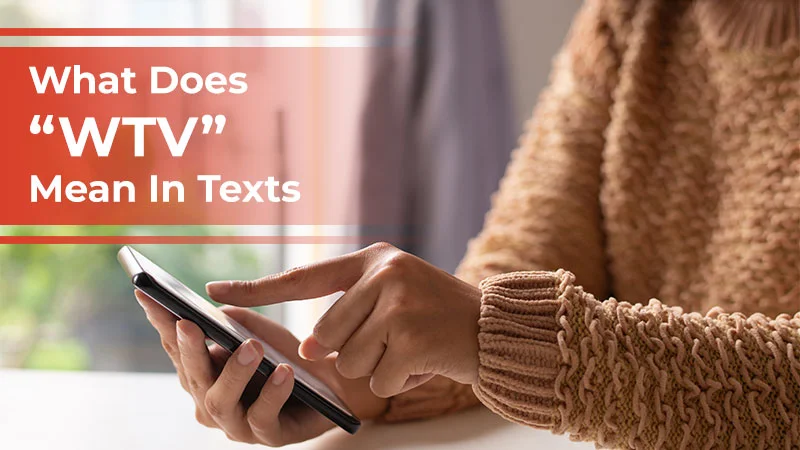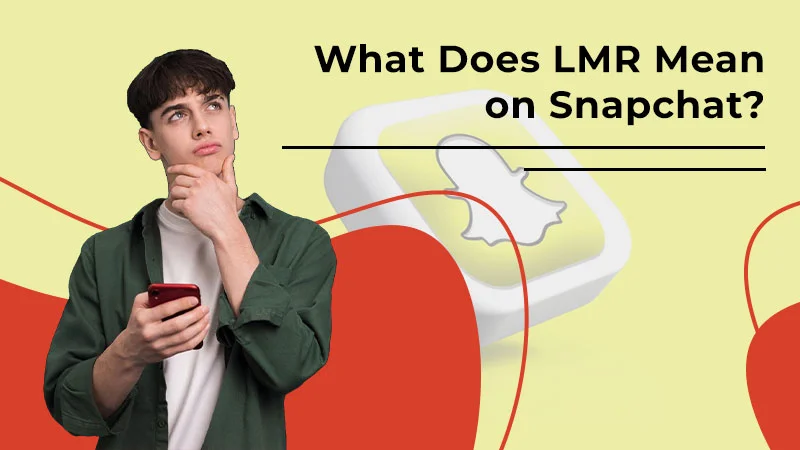What Does EYP Mean in Text? Full Meaning, Usage and Real Chat Examples!

If you use messaging apps often, you’ve probably seen a lot of short forms that make conversations faster. Some of them are easy to understand, like LOL, BTW or BRB. But there are times when you come across slang that makes you wonder what the person is trying to say. One such term is EYP.
If someone sends you “EYP” in a chat and you’re confused, this blog will clear everything for you. We’ll look at the meaning of EYP, how people use it in conversations, and how you should reply if someone asks you EYP.
Quick Overview
| Question | Answer |
| Meaning of EYP | Explain Your Problem |
| Type | Internet slang and acronym |
| Used on | WhatsApp, Instagram, Snapchat, Messenger, etc. |
| Purpose | To ask someone to open up about an issue |
| Professional use | Not recommended |
| Best reply | Only share if you feel safe and comfortable |
What Does EYP Mean in Text?
EYP means “Explain Your Problem.”
People use EYP when they want someone to tell them directly what’s bothering them or why they’re upset. It’s a quick and direct way of saying:
- Tell me what’s wrong
- What’s the issue?
- What happened? I want to know
So if someone texts you EYP, it usually means they want to understand your situation better.
Why People Use EYP in Chats
EYP makes the conversation quicker because the other person doesn’t have to guess what you’re thinking.
Most people use EYP when:
1. To understand what’s wrong
When someone is upset, stressed or talking indirectly, EYP helps the other person get clarity instead of guessing.
2. To avoid misunderstandings
Instead of assuming things and creating confusion, EYP encourages the person to speak openly about the real issue.
3. To solve a problem quickly
If there’s an argument or a conflict, asking EYP helps get straight to the core of the issue so the conversation doesn’t drag unnecessarily.
4. To show they are ready to listen
Sometimes people say EYP to show support. It signals that they care and genuinely want to hear the other person’s side.
5. To make the conversation direct
In texting, long explanations are rare. EYP brings the conversation to the main point without beating around the bush.
6. To encourage someone to open up emotionally
If someone is hesitating to talk about their feelings, EYP acts as a push to help them express what’s bothering them.
7. To clear tension during an argument
When the chat starts getting heated, EYP shows a willingness to stop the fight and address the actual reason behind it.
8. To show curiosity
Sometimes people use EYP simply because they want to know what happened and are curious about the situation.
9. To continue the conversation
If the flow of conversation is about to stop, EYP helps keep it going by asking the other person to explain further.
10. To get better context before replying
People prefer knowing the exact problem so they can reply correctly rather than giving random or irrelevant responses.
EYP shows that the other person is ready to listen and get straight to the point.
Is EYP Slang or an Acronym?
EYP is both:
- Acronym: because it is made from the first letters of the phrase Explain Your Problem
- Slang: because it is a casual term used mostly online and not in formal communication
You will usually see it on:
- Instagram DM
- Facebook Messenger
- Snapchat
- Online gaming chat
- Telegram
- Discord
You won’t generally see EYP in professional messages, school emails or office chats.
Real Chat Examples of EYP
Here are some real-style chat examples that make the meaning easier to understand:
Example 1
A: I’ve been stressed the whole day
B: Why? EYP
A: My boss gave too much work today
Example 2
A: I don’t think you understand me
B: Then EYP so I can fix it
A: Okay, here’s what’s bothering me…
Example 3
A: I don’t want to talk
B: Fine, but someday EYP
A: Maybe later
Example 4
A: I’m done with everything
B: Slow down. EYP
A: I failed my exam again
In every case, EYP invites the person to open up.
Different Contexts Where EYP Is Used
| Context | Why It’s Used | Tone |
| Friends | To listen and support | Caring |
| Couples | To stop arguments and talk openly | Emotional |
| Group chat | To understand the real issue quickly | Neutral |
| Gaming chat | To solve a quick problem | Urgent |
| Online friendships | To understand the person better | Curious |
EYP vs Other Similar Chat Slangs
| Term | Meaning | When It’s Used |
| EYP | Explain Your Problem | When someone is upset or unclear |
| ASL | Age, Sex, Location | Getting basic personal information |
| HMU | Hit Me Up | Asking someone to message later |
| WBY | What About You | Asking for someone’s opinion |
| IDK | I Don’t Know | When someone is unsure |
EYP is different because it directly asks for the reason behind someone’s feelings or issue.
How to Reply When Someone Texts EYP
You can choose your reply based on how comfortable you feel.
If you want to open up
- “Okay, here’s the problem…”
- “The issue is…”
- “I’m upset because…”
If you’re not ready to talk
- “I’ll explain later.”
- “I’m not in the mood right now.”
- “I don’t think I can talk about it today.”
If you want to avoid the topic
- “Let’s talk about something else.”
- “Can we skip this?”
You are never forced to explain something if you don’t feel comfortable.
Is EYP Rude?
EYP is not rude by itself. The tone decides everything.
It can feel:
- Supportive → if someone genuinely wants to help you
- Neutral → if someone simply wants clarity
- Harsh → if written in anger or without context
So understanding the chat tone before reacting is important.
Should You Use EYP in Text?
Use EYP when:
- You know the person well
- You want them to share what’s wrong
- You want to solve a misunderstanding
Avoid EYP when:
- You’re messaging teachers or colleagues
- You’re texting a new contact or stranger
- The conversation is sensitive and needs patience instead of pressure
Sometimes saying “I’m here if you want to talk” is better than EYP.
Why EYP Matters in Modern Communication
EYP plays a meaningful role in today’s online conversations because it helps people understand each other better without wasting time. Texting is fast, but it can also be confusing when emotions or problems are involved. Many users don’t have the patience to explain things step by step, and many others don’t understand hints or indirect messages. EYP bridges that gap.
Here’s why it matters today:
- Makes communication more transparent
People don’t need to guess what the other person is thinking. EYP encourages honesty and clarity.
- Helps control misunderstandings
A lot of chats turn into arguments because someone interprets a message differently. EYP helps clear things before they escalate.
- Saves time in fast digital conversations
Instead of dragging the talk, EYP brings the chat to the main issue quickly and keeps the conversation efficient.
- Promotes emotional openness
Many people feel better when someone asks what’s wrong directly. It shows interest, care and support.
- Improves problem-solving and bonding
Once someone expresses their problem, it becomes easier to solve it together. This builds trust and strengthens relationships.
- Matches the communication style of Gen-Z & young users
Younger users prefer quick, direct slang. EYP fits perfectly into modern texting culture.
Final Thoughts
EYP is a casual and direct way of asking someone to explain what’s stressing them or confusing them. If you see this slang during a chat, it’s normally a sign that the person wants clarity or wants to support you. Whether you reply or not always depends on your comfort level, and it’s perfectly okay to explain later or not at all.
FAQ
Have you got any additional questions about the issues? There’s no need to look for the answers online if you can find them here.
No. In texting, EYP only means Explain Your Problem.
Yes. It’s mostly used by teenagers and young adults on social media.
Prefer not. It is better suited for close contacts.
You can always say you don’t want to talk right now. You are never obligated to explain.
Instagram DMs, Snapchat, WhatsApp and Messenger.




